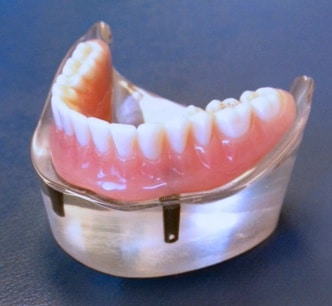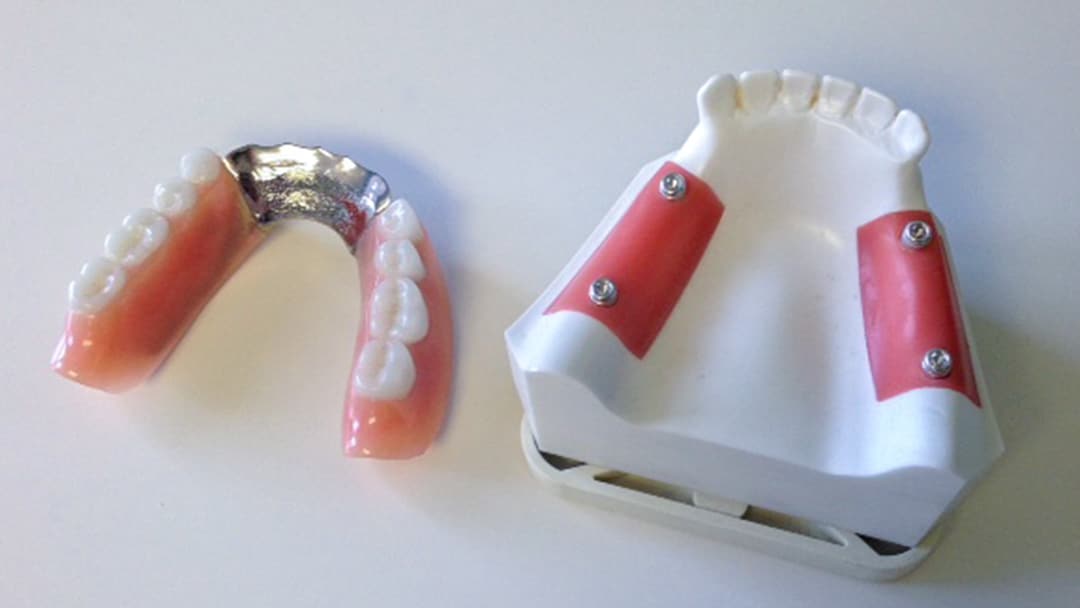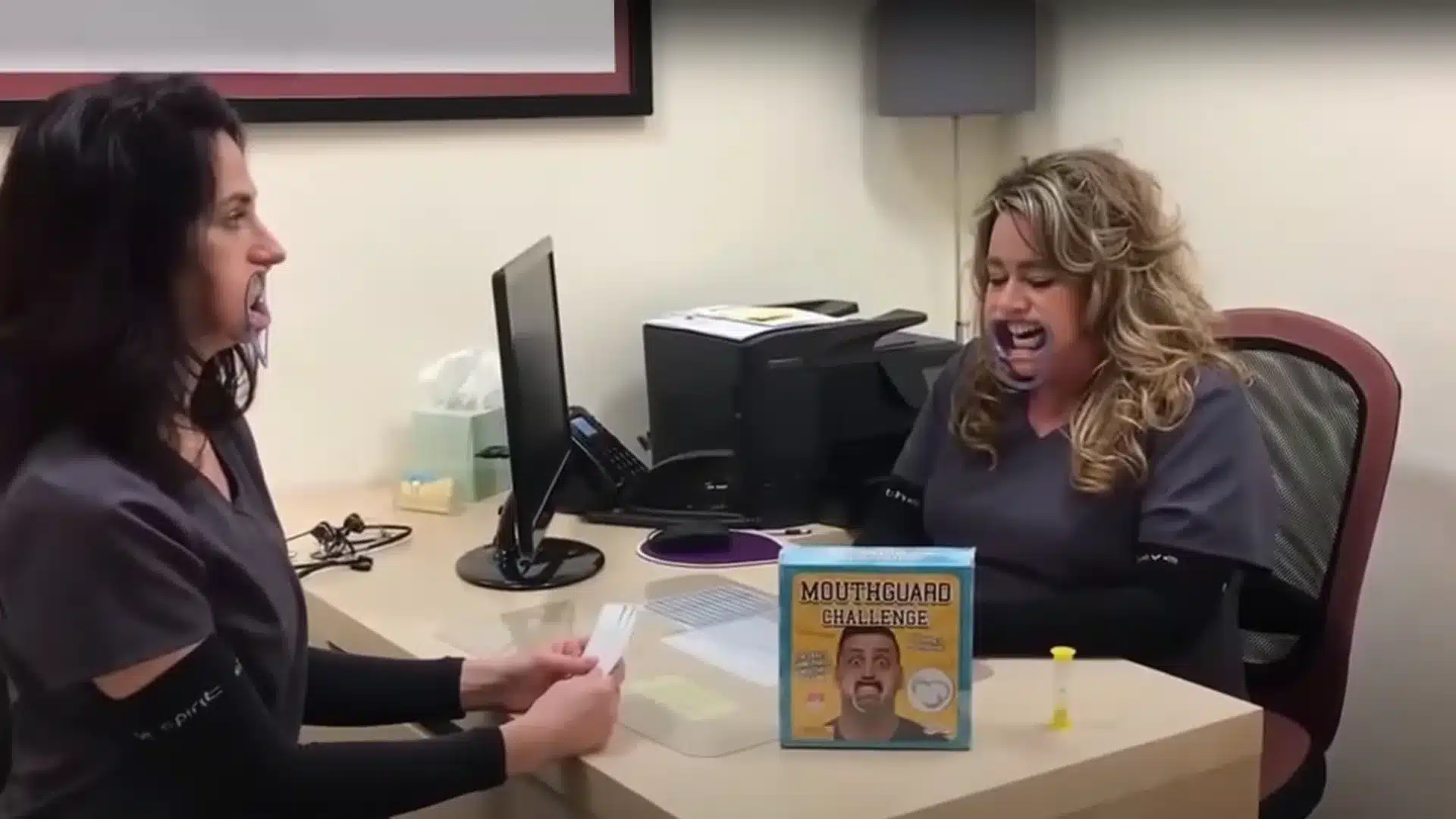As young children, losing a tooth is probably one of the more exciting milestones we have. Unfortunately, the tooth fairy isn’t going to pay any of us middle-aged folks a visit with her money purse, nor are there a third set of strong, shiny white teeth coming to replace the ones that we might lose in adulthood.
Population studies show that over 45 million adults in America wear either a full or partial denture. The domino effect of having missing teeth affects not just your appearance and ability to chow down on a rib eye, but your jaw bone will literally start wasting away, which means that adjacent teeth begin to shift and can even drop out of place.
For the longest time, dentures have been filling (notice my dental pun?) unsightly holes and gaps in people’s smiles. And when made well, they offer a functional solution.
However, we’ve all seen the person talking whose denture is flopping about, or they have a bit of a lisp, and typically refuse the corn on the cob when you invite them over for a BBQ. All issues with traditional dentures.
Fortunately, modern technology and dentistry have evolved to create a ‘snap on denture.’ They’re removable, like traditional dentures, but they offer some improved features and functionality.

Where a regular denture rests on the gums and is held in by suction, an implant supported denture, like the one shown here on the right, is locked into place by snapping together the attachments that are on the underside of the denture (‘female attachments’) to ones on implants that have been placed into the jawbone (‘male attachments’).
An implant supported denture is still fabricated in the same way as a regular denture; the base is made from acrylic to look like gums, and acrylic or porcelain teeth are mounted onto it.
One of the biggest advantages of an ‘implant supported denture‘, or ‘over denture with implants,’ (also referred to as an all-on-4 denture) is that it can prevent bone loss.
It also provides more stability than a regular denture, which means that speaking will be easier, and there is less chance of having it fall out of your mouth – and people think walking around with a bit of toilet paper stuck to the bottom of their shoe is socially embarrassing!
The time frame allowed to make an implant supported denture varies depending on several factors.
The first appointment involves taking a series of x-rays and using computed tomography to scan your mouth. This helps me locate where your sinuses and nerves are in relation to your teeth, as well as showing how much bone is available so I can determine the best location to place the implants.
If there is not enough bone available to support implants, then a bone graft can be done to create a more stable foundation. It is at this time that extractions (if needed) will be scheduled, which are done at the same time as grafting. If you are not already wearing a denture, you will have a temporary one to wear- dentists understand that no one wants to walk around toothless for several months.
Once it has been determined that there is sufficient jawbone available, or the bone grafting has ‘taken’, the first surgical procedure can be completed. An incision is made in the gum where the implant will be placed, and a hole is drilled into the bone. The implant is placed into the hole, and the incision is closed with stitches. Don’t worry, you will leave the office with some painkillers and anti-inflammatories!
A healing period of 2-3 months follows, allowing the bone and implants to integrate (attach and fuse). At the next appointment we take an x-ray to confirm that the implant is ready to be uncovered. Another small incision is made in the gum to expose the tops of the implants. A healing cap (a round piece of metal that holds the gum away from the head of the implant) is placed on top of each implant. This will help guide your gum tissue to heal correctly, and is left in place for 10-14 days. At that time, the healing caps are switched out for regular abutments (aka the ‘male attachments’).
As long as everything looks good from a post-op perspective (no swelling), we will take a full impression to capture your jaw, the implants, and relationship to the opposing arch. A model is made from the impressions, and is then used to make the denture framework and teeth. What follows are a series of appointments that look identical to having a regular denture made.
Remember to keep in mind that a snap-on implant supported denture is no different than a regular denture in terms of usage and oral hygiene practices. They should be removed at night, and the gaskets on the denture, as well as the ones around the implants in your mouth, need to be cleaned of debris and residue daily. Unfortunately, there’s no getting around it, you will still need to clean your “teeth” every day!
We understand that dentistry can seem confusing and overwhelming, especially if you haven’t done a few years of dental school. If you’re looking at your dental restoration options, give us a call at (207) 782-5308. We’ll be happy to answer any questions you have, or set up a time where you can meet with me – one on one – I have all kinds of cool models and examples that I can show you!





